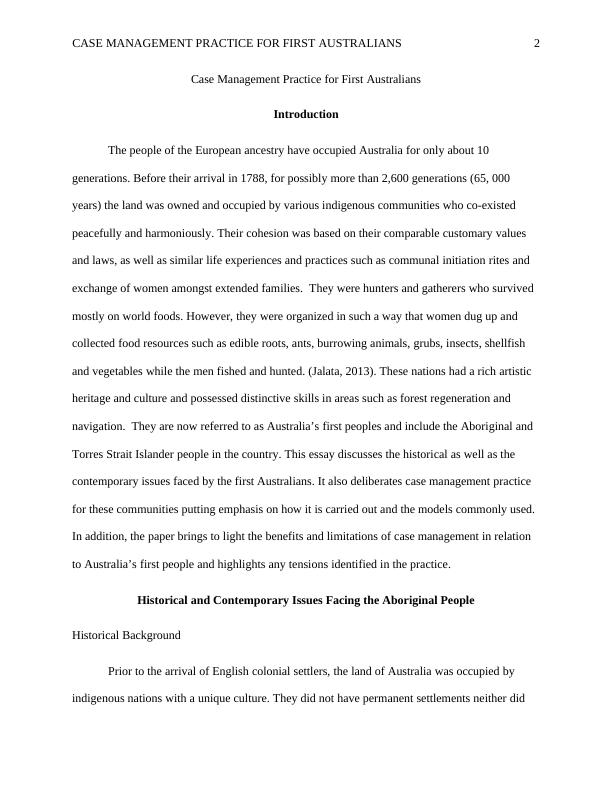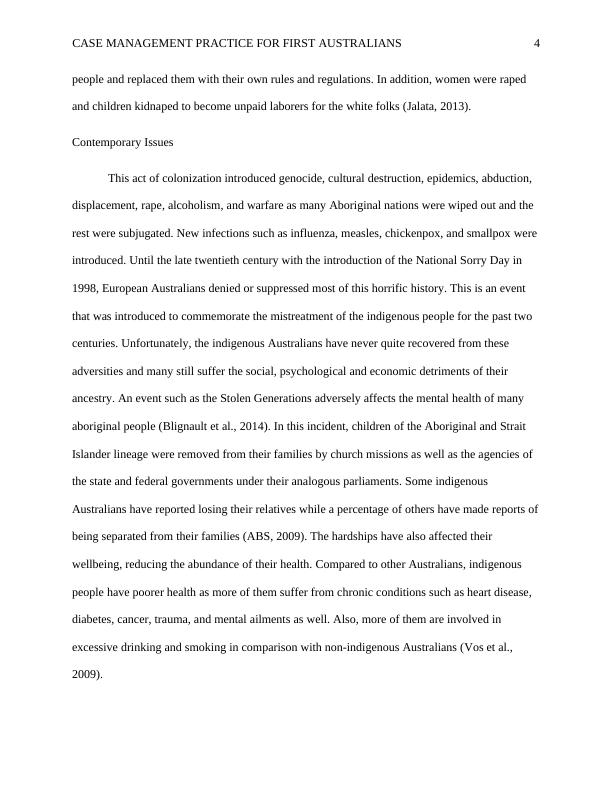Case Management Practice for First Australians
Write a critical essay about case management practice in one field of interest, focusing on the literature, models of case management, issues faced by the target population, and the influence of context.
12 Pages2929 Words25 Views
Added on 2023-03-21
About This Document
This essay discusses the historical as well as the contemporary issues faced by the first Australians. It also deliberates case management practice for these communities putting emphasis on how it is carried out and the models commonly used.
Case Management Practice for First Australians
Write a critical essay about case management practice in one field of interest, focusing on the literature, models of case management, issues faced by the target population, and the influence of context.
Added on 2023-03-21
ShareRelated Documents
End of preview
Want to access all the pages? Upload your documents or become a member.
Aboriginals and their healthcare
|15
|1495
|375
Historical Impacts on Families Today
|11
|2895
|26
Essay on Australia's History, Culture and Tradition
|10
|2460
|780
Indigenous Community and Assessment
|12
|1968
|211
Health and Indigenous Australian Peoples Culture Values and Beliefs
|8
|2131
|389
Aboriginal People in Sydney
|6
|1356
|119




